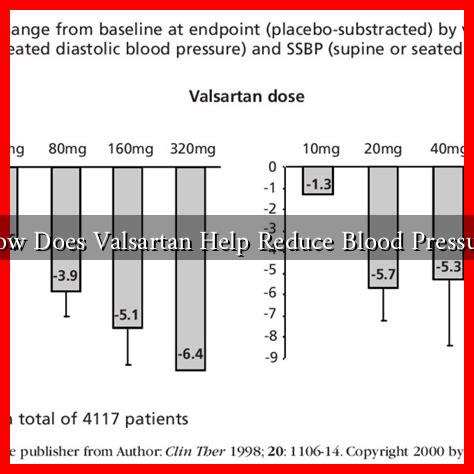-
Table of Contents
How Does Valsartan Help Reduce Blood Pressure?
High blood pressure, or hypertension, is a prevalent health issue affecting millions worldwide. It can lead to severe complications, including heart disease, stroke, and kidney failure. One of the medications commonly prescribed to manage hypertension is Valsartan, an angiotensin II receptor blocker (ARB). This article explores how Valsartan works to reduce blood pressure, its benefits, and important considerations for patients.
Understanding Hypertension and Its Risks
Hypertension occurs when the force of blood against the artery walls is consistently too high. According to the World Health Organization (WHO), approximately 1.13 billion people worldwide have hypertension, and only 1 in 5 have it under control. The risks associated with uncontrolled hypertension include:
- Heart attack
- Stroke
- Heart failure
- Kidney damage
- Vision loss
What is Valsartan?
Valsartan is a medication that belongs to a class of drugs known as angiotensin II receptor antagonists. It is primarily used to treat high blood pressure and heart failure. By blocking the action of angiotensin II, a hormone that constricts blood vessels, Valsartan helps to relax and widen blood vessels, leading to a decrease in blood pressure.
How Valsartan Works to Lower Blood Pressure
The mechanism of action of Valsartan can be broken down into several key steps:
- Inhibition of Angiotensin II: Angiotensin II is a potent vasoconstrictor, meaning it narrows blood vessels, increasing blood pressure. Valsartan blocks the receptors that angiotensin II binds to, preventing its effects.
- Vasodilation: By inhibiting angiotensin II, Valsartan promotes vasodilation, or the widening of blood vessels. This reduces the resistance the heart has to work against, lowering blood pressure.
- Reduced Aldosterone Secretion: Angiotensin II stimulates the secretion of aldosterone, a hormone that causes the kidneys to retain sodium and water. By blocking angiotensin II, Valsartan reduces aldosterone levels, leading to decreased blood volume and lower blood pressure.
Clinical Evidence Supporting Valsartan’s Efficacy
Numerous studies have demonstrated the effectiveness of Valsartan in managing hypertension. For instance, a study published in the Journal of Hypertension found that patients treated with Valsartan experienced significant reductions in systolic and diastolic blood pressure compared to those receiving a placebo. The results indicated:
- A reduction in systolic blood pressure by an average of 10-15 mmHg.
- A reduction in diastolic blood pressure by an average of 5-10 mmHg.
Additionally, Valsartan has been shown to improve cardiovascular outcomes. In the VALIANT trial, patients with heart failure and left ventricular dysfunction who were treated with Valsartan had a lower risk of death from cardiovascular causes compared to those receiving standard therapy.
Benefits of Valsartan
In addition to its primary function of lowering blood pressure, Valsartan offers several other benefits:
- Improved Heart Function: Valsartan can enhance heart function in patients with heart failure.
- Kidney Protection: It may help protect kidney function in patients with diabetes or chronic kidney disease.
- Fewer Side Effects: Compared to other antihypertensive medications, Valsartan is often better tolerated, with fewer side effects such as cough.
Considerations and Side Effects
While Valsartan is generally safe, it is essential for patients to be aware of potential side effects, which may include:
- Dizziness or lightheadedness
- Fatigue
- Elevated potassium levels
- Kidney dysfunction
Patients should consult their healthcare provider before starting Valsartan, especially if they have a history of kidney problems or are pregnant.
Conclusion
Valsartan is a powerful tool in the management of hypertension, effectively lowering blood pressure through its action on the renin-angiotensin system. With its proven efficacy and additional benefits, it plays a crucial role in improving cardiovascular health. However, as with any medication, it is vital for patients to work closely with their healthcare providers to ensure safe and effective treatment. By understanding how Valsartan works and its potential benefits and risks, patients can make informed decisions about their hypertension management.




